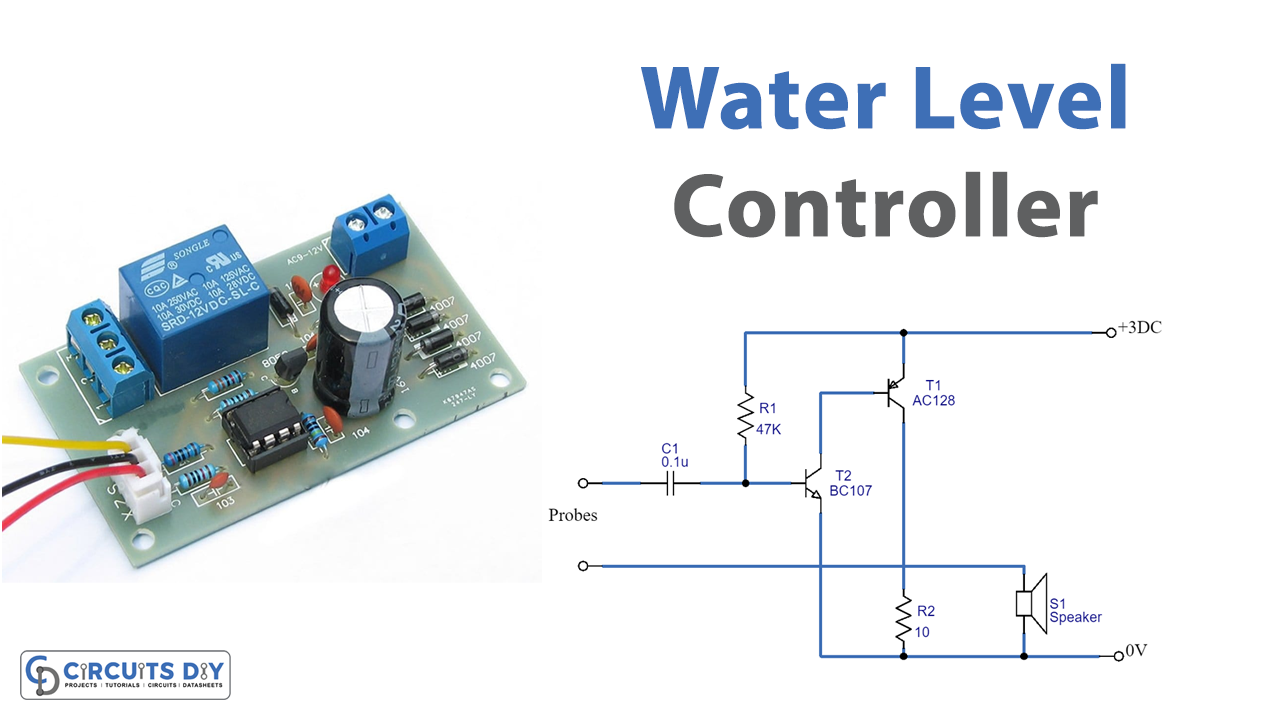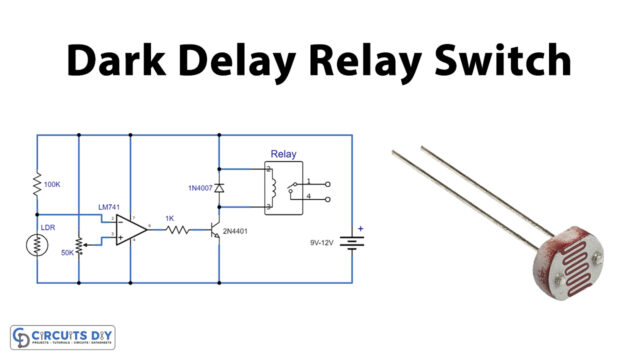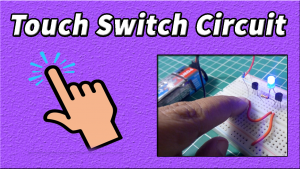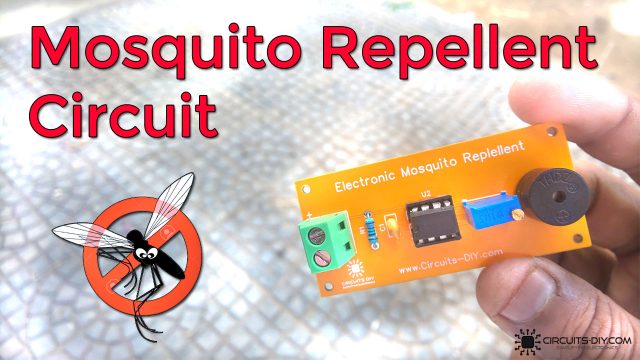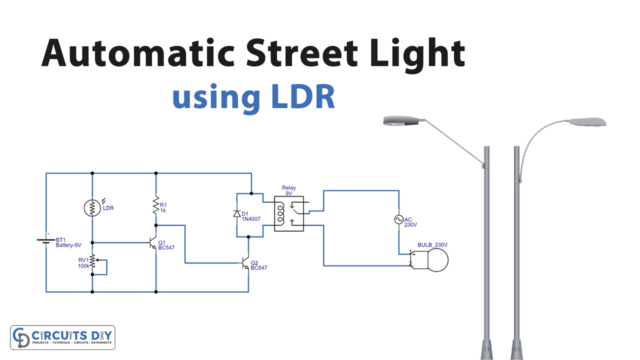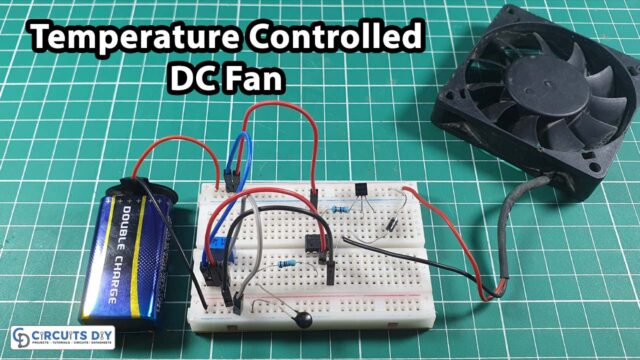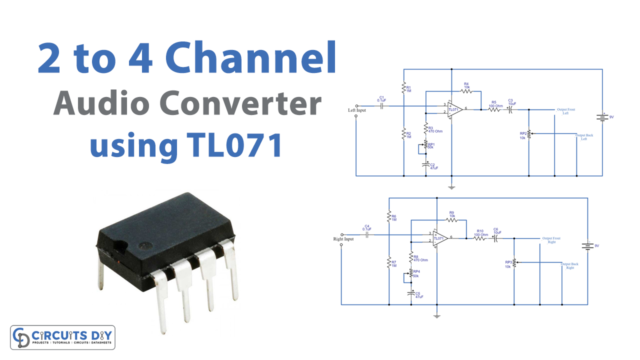Introduction
Are you tired of manually checking the water levels in your tanks and reservoirs? Want to automate the process and make it more efficient? Look no further! This guide will show you how to make the Simplest Water Level Controller Circuit with Buzzer. With a few essential electronic components and a little know-how, you can create a reliable and cost-effective water level controller circuit that will keep you informed and in control. Whether you’re a seasoned DIY enthusiast or just starting out, this step-by-step tutorial is easy to follow and will have you up and running in no time. So let’s get started and make your water management a breeze!
Hardware Required
You will require the following hardware for Water Level Controller Circuit.
| S.no | Components | Value | QTY |
|---|---|---|---|
| 1 | Capacitor | 0.1 | 1 |
| 2 | Resistor | 10, 47k | 1, 1 |
| 3 | Transistor | AC128, BC107 | 1, 1 |
| 4 | Speaker | 8ohm | 1 |
Circuit Diagram
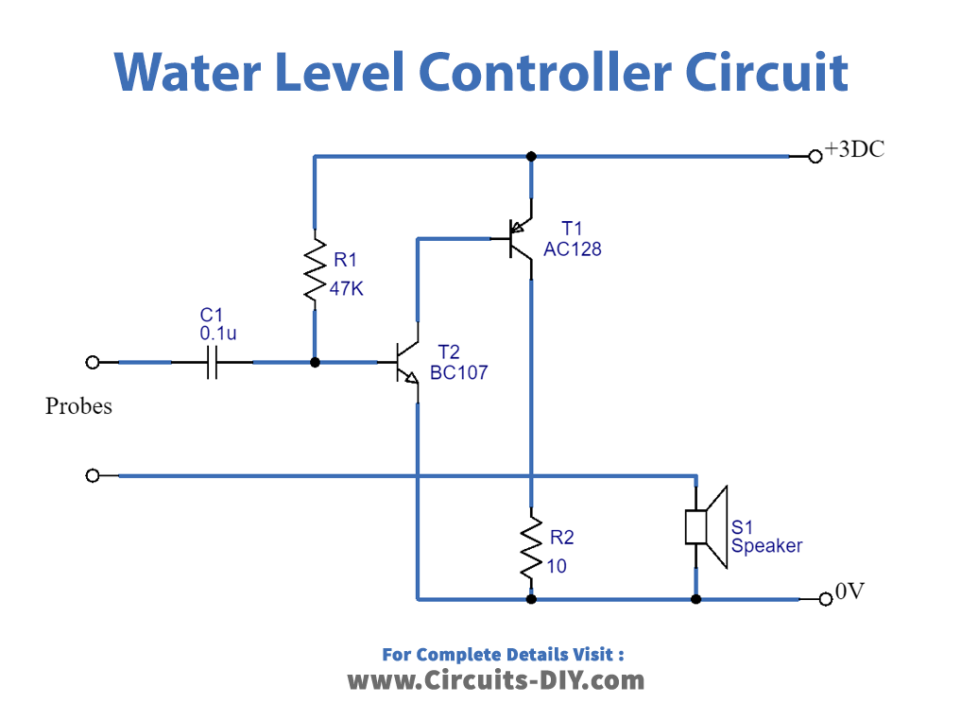
Working Explanation
The Simplest Water Level Controller Circuit with Buzzer is a simple and cost-effective solution for monitoring the water level in your tanks or reservoirs. It operates by sounding an alarm (buzzer) when the water level reaches a predetermined height. The circuit consists of two probes placed in the water and connected to an audio oscillator with positive feedback.
When the water level is below the pre-selected height, the feedback path between the probes and the oscillator is open, and the alarm does not sound. However, when the water level rises to the pre-selected height and submerges the probes, the feedback path is completed, and the oscillator starts to operate, resulting in the alarm sounding.
We can adjust the pitch of the alarm by changing the value of the capacitor in the circuit. This simple circuit is a convenient and easy way to ensure that you never over-fill or under-fill your water storage systems again.
Final Words
This project is an excellent introduction to the world of electronics and provides a convenient and reliable solution for monitoring water levels. With a few basic components and a little know-how, you can quickly build this circuit and take control of your water management. So why wait? Start building your own Simplest Water Level Controller Circuit with Buzzer today!


